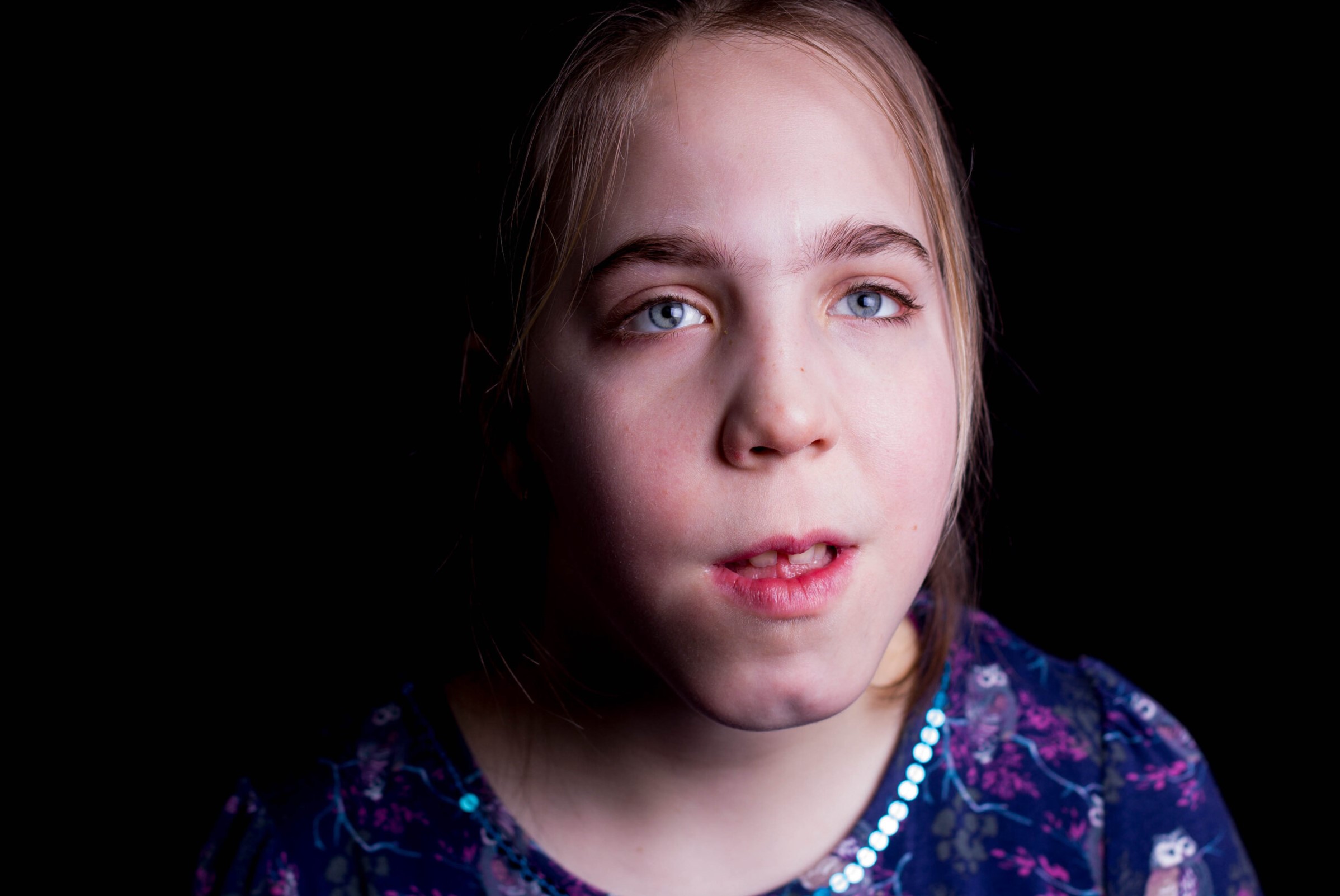
What is Patau Syndrome? Patau Syndrome, also known as Trisomy 13, is a rare genetic disorder caused by an extra copy of chromosome 13. This condition leads to severe developmental issues and a high mortality rate, especially within the first year of life. Affecting approximately 1 in every 4,000 to 5,000 births, Patau Syndrome presents a range of symptoms, including facial defects, heart abnormalities, and limb deformities. Babies with this syndrome often face significant health challenges, such as restricted growth, low birth weight, and various congenital anomalies. Early diagnosis and family support are crucial for managing this complex condition.
Key Takeaways:
- Patau Syndrome, also known as Trisomy 13, is a rare genetic disorder with severe developmental impacts, affecting 1 in every 4,000 to 5,000 births. It causes various physical and intellectual disabilities.
- Early diagnosis and family support are crucial for managing Patau Syndrome. The condition often leads to severe health challenges, and the survival rate is very low, with most infants not living beyond their first year.
50 Facts about Patau Syndrome
Patau syndrome, or Trisomy 13, is a rare genetic disorder with profound impacts on development and survival. Understanding this condition helps in providing better care and support for affected families. Here are 50 key facts about Patau syndrome.
What is Patau Syndrome?
Patau syndrome is a genetic disorder caused by an extra copy of chromosome 13. This extra genetic material disrupts normal development, leading to severe physical and intellectual disabilities.
- Definition: Patau syndrome is a chromosomal disorder where an individual has an extra copy of chromosome 13, leading to severe developmental issues.
- Incidence: The incidence of Patau syndrome is approximately 1 in every 4,000 to 5,000 births.
- Causes: The condition is usually caused by a random error during cell division, resulting in an extra copy of chromosome 13. It is not inherited and occurs randomly during conception.
Symptoms and Physical Characteristics
Babies with Patau syndrome often exhibit a range of physical abnormalities. These symptoms can be detected through prenatal screening and diagnostic tests.
- Symptoms: Babies with Patau syndrome often have severe health problems, including restricted growth in the womb, low birth weight, and a variety of congenital anomalies.
- Facial Defects: Common facial defects include cleft lip and palate, microphthalmia (small eyes), and anophthalmia (absence of one or both eyes).
- Central Nervous System Abnormalities: Central nervous system abnormalities are common, with holoprosencephaly (brain not dividing into two halves) being a characteristic feature.
- Heart Defects: Heart defects are frequent, including ventricular septal defects, atrial septal defects, and tetralogy of Fallot.
- Limb Abnormalities: Limb abnormalities such as polydactyly (extra fingers or toes) and rocker-bottom feet are also common.
- Genitourinary Abnormalities: Genitourinary abnormalities include cryptorchidism (undescended testes), hypospadias (urethral opening on the underside of the penis), and labia minora hypoplasia.
- Digestive Tract Abnormalities: Digestive tract abnormalities include omphalocele (abdominal wall defect) and incomplete rotation of the colon.
- Kidney Abnormalities: Kidney abnormalities include polycystic kidney disease and hydronephrosis.
- Pancreatic Abnormalities: Pancreatic abnormalities are less common but can include pancreatic cysts or other structural anomalies.
Survival and Prognosis
The prognosis for Patau syndrome is generally poor, with many infants not surviving beyond their first year. Early diagnosis and supportive care are crucial.
- Survival Rate: The survival rate for babies with Patau syndrome is very low, with about 90% dying within the first year of life.
- Mortality Rate: The estimated mortality rate for Patau syndrome is about 50 times higher than the general neonatal mortality rate.
- Median Survival Time: The median survival time for patients with Patau syndrome is approximately 7-10 days.
Diagnosis and Testing
Early diagnosis through prenatal screening and diagnostic tests can help families prepare for the challenges ahead.
- Prenatal Diagnosis: Early prenatal diagnosis is crucial for making informed decisions about the continuation of pregnancy and avoiding unnecessary interventions.
- Screening Tests: Screening tests for Patau syndrome typically involve ultrasound and maternal serum biochemistry tests, although these are not as effective as for other chromosomal abnormalities like Trisomy 21.
- Diagnostic Tests: Diagnostic tests such as chorionic villus sampling (CVS) and amniocentesis can confirm the presence of an extra copy of chromosome 13.
- Genetic Testing: Genetic testing for parents is recommended if the baby's condition is caused by a chromosomal translocation, to assess the risk of future pregnancies.
Family Support and Counseling
Families affected by Patau syndrome often need significant support and counseling to cope with the prognosis and manage the child's care.
- Family Support: Families affected by Patau syndrome often require significant support and counseling to cope with the prognosis and manage the child's care.
- Interprofessional Team: An interprofessional team is essential for improving care coordination and enhancing the delivery of care for patients with Patau syndrome.
- Counseling: Counseling is critical to inform families about the poor prognosis and help them make informed decisions about the management of the condition.
Clinical Features
Patau syndrome presents with a variety of clinical features that affect multiple organ systems.
- Clinical Features: Infants with Patau syndrome typically have intrauterine growth restriction and microcephaly (small head size).
- Facial Features: Facial features include a sloping forehead, small malformed ears, anophthalmia or microphthalmia, micrognathia (small jaw), and pre-auricular tags (small tags on the ears).
- Central Nervous System Defects: Central nervous system defects are midline and include alobar holoprosencephaly, which affects brain development.
- Extremity Defects: Extremity defects include postaxial polydactyly (extra fingers), congenital talipes equinovarus (clubfoot), and rocker-bottom feet.
- Cardiac Defects: Cardiac defects include ventricular septal defects, atrial septal defects, tetralogy of Fallot, atrioventricular septal defects, and double outlet right ventricle.
- Organ System Abnormalities: Additional organ system abnormalities include lung, liver, kidney, genitourinary tract, digestive tract, and pancreatic defects.
Specific Organ Abnormalities
Patau syndrome affects various organs, leading to multiple health issues.
- Cryptorchidism: Cryptorchidism is a common genitourinary abnormality where the testes do not descend into the scrotum.
- Hypospadias: Hypospadias is another genitourinary abnormality where the urethral opening is on the underside of the penis.
- Labia Minora Hypoplasia: Labia minora hypoplasia is a condition where the labia minora are underdeveloped.
- Omphalocele: Omphalocele is an abdominal wall defect where the intestines are outside the body, covered only by a membrane.
- Incomplete Rotation of the Colon: Incomplete rotation of the colon is a digestive tract anomaly where the colon does not rotate properly during fetal development.
- Polycystic Kidney Disease: Polycystic kidney disease is a kidney anomaly characterized by multiple cysts on the kidneys.
- Hydronephrosis: Hydronephrosis is a kidney anomaly where the kidney swells due to the accumulation of urine.
- Horseshoe Kidney: Horseshoe kidney is a rare kidney anomaly where the two kidneys fuse together at the lower end.
- Meckel Diverticulum: Meckel diverticulum is a small bulge in the small intestine that occurs during fetal development.
Long-term Outcomes
For those who survive infancy, long-term outcomes include severe developmental and health challenges.
- Failure to Thrive: Patients surviving past infancy often experience failure to thrive, which is a condition where the child does not gain weight or grow at a normal rate.
- Intellectual Disability: Many patients with Patau syndrome have intellectual disability, which is a condition where the child has significant cognitive impairments.
- Seizures: Seizures are common in patients with Patau syndrome, particularly those who survive past infancy.
- Psychomotor Disorder: Surviving patients often have a severe psychomotor disorder, which affects their motor skills and coordination.
- Trigger Thumbs: Trigger thumbs, where the thumb can be bent into the palm and cannot be straightened, are a common feature of Patau syndrome.
- Capillary Hemangiomata: Capillary hemangiomata, which are benign vascular tumors, can occur in patients with Patau syndrome.
Common Facial and Physical Defects
Facial and physical defects are hallmark features of Patau syndrome, often requiring surgical intervention.
- Cleft Lip and Palate: Cleft lip and palate are among the most common facial defects in Patau syndrome.
- Microphthalmia: Microphthalmia, where one or both eyes are abnormally small, is another common facial defect.
- Anophthalmia: Anophthalmia, where one or both eyes are absent, is a severe facial defect associated with Patau syndrome.
- Microcephaly: Microcephaly, where the head is significantly smaller than normal, is a common feature of Patau syndrome.
- Ear Malformations: Ear malformations and deafness are also common in patients with Patau syndrome.
- Abdominal Wall Defects: Abdominal wall defects such as exomphalos (omphalocele) can occur in Patau syndrome.
- Genetic Material Rearrangement: In some cases, genetic material is rearranged between chromosome 13 and another chromosome, leading to a chromosomal translocation that can be inherited.
Understanding Patau Syndrome
Patau syndrome, or Trisomy 13, is a severe genetic disorder marked by an extra chromosome 13. It affects about 1 in 4,000 to 5,000 births. Babies with this condition often face numerous health challenges, including heart defects, facial abnormalities, and central nervous system issues. The survival rate is low, with many infants not making it past their first year. Early prenatal diagnosis and genetic testing can help families prepare and make informed decisions. Support from an interprofessional team is crucial for managing the complex needs of affected children. While the prognosis is poor, understanding the various aspects of Patau syndrome can aid in providing better care and support for families navigating this difficult journey.
Frequently Asked Questions
Was this page helpful?
Our commitment to delivering trustworthy and engaging content is at the heart of what we do. Each fact on our site is contributed by real users like you, bringing a wealth of diverse insights and information. To ensure the highest standards of accuracy and reliability, our dedicated editors meticulously review each submission. This process guarantees that the facts we share are not only fascinating but also credible. Trust in our commitment to quality and authenticity as you explore and learn with us.


